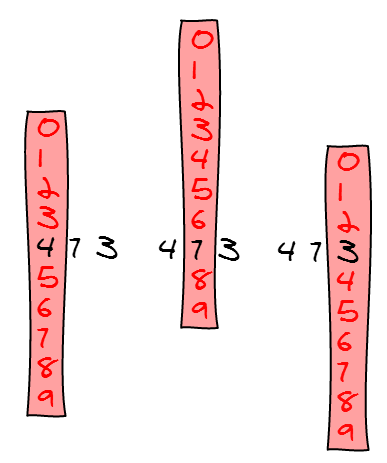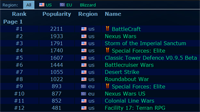Lately, I've been advocating to all my student friends to start a blog. Here's an article with the most common questions answered 🙂
What are the benefits?
Being known as an expert. The majority of my blog posts are about advanced Javascript topics. As a result, I'm being tagged as the "Javascript" guy by people that know (broad sense) me. Every time they have a question about Javascript or Web Development they go to me.
Expanding your relations. Through my activities with this blog, I had conversations with celebs such as Bjarne Stroustrup (C++), Brendan Eich (Javascript), Jeremy Ashkenas (CoffeeScript) and many other people that I didn't know before. No one in my close relations is deeply interested in what I am writing. But thanks to the internet, I can meet other people that shares the same interests.
Getting Recruited. As you become an expert in a field, people start to notice and will want you. My blog is barely known and still, I have received several job offers. However this happens at random, take it like a gift but don't expect it to happen, or it won't 🙂
Being better. I've been so much better at Javascript since I started writing about it. But maintaining this blog also helped me improve my writing skills as well as my English.
Benefits are long term. You should not start a blog and expect it to be rewarding the next week. A blog is a presence on the internet. During the first 6 months, I barely had more than 5 visitors per day, but this number slowly started growing as I wrote more articles and time passed. Now, I'm at 100 visitors a day. I'm still amazed to see that so many people come!
Who cares about my blog?
Your friends. The first thing I do when I am done writing an article is to paste the link to some of my MSN contacts that will be vaguely interested in. It is a powerful way to start a conversation with people you did not talk with for a long time. I often re-write parts of the article given the feedback I receive and it leads to great conversations.
People on the Internet. My girlfriend always says "If you thought about it, someone did it". On the same idea, I believe that the following statement is correct: "If you find something interesting, someone else does too". Here is a fact, there are over 100 visitors on my blog everyday. Google connects people with the same interests!
People that want to know about you. The extreme example is your recruiter, but it could be a co-worker or even just a friend. Your blog is the place where you can show who you are and what you are worth. It is much better than a resume as it isn't constrained by a strong standardization and a ridiculous 1-page constraint.
I don't know what to write
Projects you've done. The easiest way to start a blog is to write one article per school/personal projects you have done. Put a screenshot, a description of what it does and you are set. This way, if I want to know about you, I will quickly scroll over your blog and will see what you have done. If something interests me, I'm going to read the article more closely.
Techniques you have used. It is interesting to go over your projects and allocate one blog article for each technical problem you solved. For example, the project Guild Recruitment leaded me to write several articles such as Dynamic Query Throttling, Mysqli Wrapper, Search Optimizations. The latest eventually made me look deeper to write Sorting Table.
Follow-up a conversation. I am often debating with my friends on topics related to computer science. Those discussions are potential targets for a blog post! It is really interesting to go deeper and start writing about it. You'll get more arguments to crush your friends theories 🙂
Start writing and ideas will flow. Once you have an article written, it often generates new ideas. Now, every time I write some code, I ask myself if that would be worth blogging. If yes, I create a draft on WordPress for later. This way when I'm in the mood of writing, I have many things to write.
There are already many article on the subject, why should I write mine?
Influence people around you. I always love reading my friends blog because they are talking about subjects that I'm interested in but that I would not have willingly researched for. It helps expanding my Javascript-centric horizon.
If you write about it, it means you know it. For example I wrote an article about how to use makedepend in makefiles. It tells recruiter multiple things. I have experienced the problem of dependency management. I am confortable with Makefiles as I used them in a fancy way. This is invaluable compared to a Makefile entry in a resume.
Go deeper in the subject. I often find myself writing code pretty easily without too much thinking. Writing about this particular sexy technique in my blog more challenging. It requires me to state the exact problem I try to solve, think about alternatives, seek for already existing solutions ...
After the post has been written, I receive a lot of feedback. My friends almost always talk about how it would have been solved in their own language of predilection. They also provide more use-cases where the technique would and wouldn't work, leads to improve it ...
How long does it take?
Count one evening per post. I usually spend one full evening writing down an involved article like this one. However I think a lot about the subject in a passive way by reading related articles, thinking about it in my bed ... Articles that show off a project are much quicker to write, I'd say about 30 minutes.
Post as often as you want. When I have something I deeply want to share I write an article about it. Once I've written once, I often see myself writing some more about drafts I had. Then there is a period of silence. Overall, I'd say I write every two months, often during holidays.
How many articles. Each new article you write is not going to shadow the other but adds up. When I check my analytics, each article written slightly increases my daily viewer count. But even with one article a blog is worth it.
How do I start?
Install a WordPress. Even if you are a geek, I strongly recommend against you coding your own blog or using some nerdy blog software. I went over that myself and I found myself coding stuff every time I wanted to write an article. WordPress gives you all the tools you need to blog, and if you want to do something a bit special, chances are there's already an extension that does it.
Quickly write your first article. Don't spend so much time finding the perfect theme or installing many extensions you don't even need yet. The first article is the hardest! Write it down and send it to your friends. Listen to their feedback and instead of editing the article, write another article trying to fix those issues. Writing is hard so it'll take more than one shot to feel comfortable with it. The more you practice, the easier it will be.
Conclusion
If I managed to convince your starting a blog, please give me the link! I'd love to read about your stuff and may help you get started if you want.





